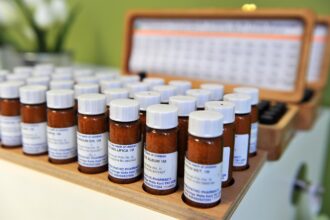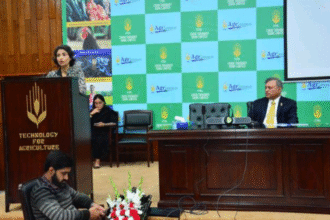As the world marks World Blood Donor Day on Saturday, Pakistan stands at a critical juncture in its healthcare narrative. In a powerful and urgent appeal issued jointly by the World Health Organization (WHO) and Pakistan’s Ministry of National Health Services, citizens have been asked to “urgently and voluntarily” donate blood.
This appeal underscores a growing concern: an acute shortage of safe blood supplies that is limiting the ability of hospitals across the country to save lives.
This year’s global theme “Give Blood, Give Hope together We Save Lives” is not just a slogan. It is a reminder of our shared responsibility and the impact a single act of compassion can have. One donation can save up to three lives, a fact reiterated by Dr Dapeng Luo, WHO Representative in Pakistan who was among the first to donate blood during a drive held at the Pakistan Institute of Medical Sciences (PIMS) in collaboration with WHO.
Blood is not manufactured; it can only come from generous, healthy individuals willing to give part of themselves to help someone in need. From women experiencing complications during childbirth to children suffering from thalassemia patients undergoing cancer treatments and victims of accidents and emergencies the demand for safe and timely blood is both critical and constant.
The reality however is stark. Pakistan faces a chronic shortage of voluntary, unpaid blood donors. A significant proportion of the blood used in our hospitals still comes from paid donors or from family replacement donations, which carry greater risks of transmitting infections and may not be readily available during emergencies. This situation is not only dangerous but also inequitable as it disproportionately affects poor and vulnerable patients who often struggle to find donors when their lives hang in the balance.
The WHO has long advocated for 100% voluntary and unpaid blood donations as the cornerstone of a safe and sustainable blood supply system. Countries that have transitioned to such systems have demonstrated significantly better health outcomes, lower transmission rates of infectious diseases, and stronger public trust in their healthcare services. Dr Luo reaffirmed whose commitment to working with Pakistan to strengthen its national blood service a much needed assurance as the country attempts to reform and modernize its healthcare infrastructure.
The success of any national blood program hinges on three key pillars: public awareness, accessibility and institutional support. The campaign at PIMS, where around 150 volunteers donated blood is a step in the right direction. But symbolic events alone are not enough. A coordinated year round effort is needed to establish a culture of regular blood donation, especially among youth and first-time donors.
Educational institutions workplaces, religious groups and civil society must be actively engaged to promote the message that donating blood is safe, simple and profoundly impactful. Simultaneously the government must ensure that blood donation centers are well equipped transparent and easily accessible both in urban and rural areas. Trust is critical: donors must be confident that their blood is being used ethically and efficiently.
Media campaigns can play a significant role here. Instead of focusing solely on crises, the media should amplify stories of everyday hero’s people who donate blood regularly those who owe their lives to anonymous donors and the healthcare workers who ensure blood is screened and delivered safely.
These stories have the power to inspire, educate, and mobilize public action.
Furthermore, corporate social responsibility (CSR) programs in the private sector can also contribute by organizing blood drives and offering incentives for regular donors such as health checkups or recognition programs. This would not only increase donations but also foster a sense of shared ownership and civic duty.
Pakistan has faced numerous health challenges from the COVID-19 pandemic to recurring outbreaks of dengue polio, and other infectious diseases. Yet amid these challenges our strength has always come from the resilience of our people and their capacity to come together in times of need.
As we observe World Blood Donor Day, let us recognize that the power to save lives does not rest solely in the hands of doctors or governments, it rests with each one of us. A single pint of blood can be the difference between life and death. It can bring hope where there was despair.
So, let us answer the call not just on specific today but throughout the year. Give blood, Give hope. Together we truly can save lives.





